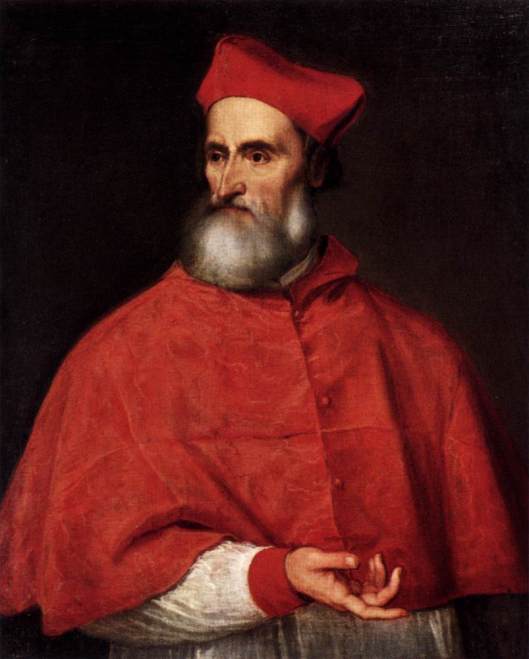-

Joachim du Bellay (1522 – 1560)
In a post entitled The Renaissance: Galileo & Galilei, I spoke about Count Bardi’s Florentine Camerata, an informal academy, and focussed on Vincenzo Galilei, a scholar, an advocate of the use of equal temperament in music, and Galileo’s father. I also wrote about Giulio Caccini, a composer who favoured monody, or one voice.
* * *
France: La Pléiade
However, we are now moving to Renaissance France where both formal and informal academies were also founded. The foremost of these academies was the Pléiade[i], an informal 16th-century (the French Renaissance) académie. It was comprised of seven members: Pierre de Ronsard, Joachim du Bellay, Jean-Antoine de Baïf, Rémy Belleau, Pontus de Tyard, Étienne Jodelle and Jean Dorat, their mentor. But, with the exception of Antoine de Baïf, members of la Pléiade’s main interest was poetry, which is literature bordering on music.
A Word About Jean Dorat
As I wrote above, Jean Dorat (3 April 1508, in Limoges – 1st November 1588), a brilliant Hellenist, was the mentor among the seven members of the Pléiade. He had in fact taught at the Collège de Coqueret and four of his pupils had been Pierre de Ronsard, Joachim du Bellay, Pontus de Tyard and Antoine de Baïf, all members of the Pléiade.
Compared to Pierre de Ronsard and Joachim du Bellay, Dorat was the lesser poet. But his fame as a scholar and Hellenist spread beyond France and, in 1556, he was appointed to the Collège Royal [ii] (French link), founded by Francis I, king of France, in 1530. An appointment to the Collège Royal remains a French scholar’s highest recognition.
—ooo—

Défense et illustration de la langue française
Défense et illustration de la langue française
Joachim Du Bellay is the eloquent author of a manifesto in which he advocated the use of French instead of Latin, his Défense & Illustration de la langue française. Had the Défense & illustration de la langue française been his only work, Du Bellay would occupy a prominent place in the history of French literature. His sentiments with respect to the French language echoed those of all seven members of the Pléiade, which makes the Défense & illustration de la langue française the group’s manifesto.
I have mentioned Joachim du Bellay in my blog on the Petrarchan Movement. You may remember that, not unlike Du Bellay, Pietro Bembo had encouraged Italian-language composers to set their music to texts by Petrarch, Torquato Tasso, Dante, etc. In his eyes, Italian had come of age. In this respect, Pietro Bembo is a precursor to Joachim du Bellay, except that Du Bellay was and remains one of France’s most celebrated poets.
Poetry
Du Bellay’s poetry was influenced by Italian poetry. He was especially fond of the Petrarchan sonnet and encouraged members of La Pléiade to model their poetry on the works produced in Italian-language lands: sonnets, odes, etc. His most famous collection of poems, Les Regrets, was written between 1553 and 1557, during a long and unhappy stay in Rome. In 1553, Joachim had travelled to Rome with his cousin Jean du Bellay, a cardinal and diplomat who was going on a mission to Rome. The collection, Les Regrets, was published in 1558.
According to the Encyclopædia Britannica, when in Rome, Du Bellay “had started to write on religious themes, but his experience of court life in the Vatican seems to have disillusioned him.”[iii] He therefore turned to meditative poetry and to the sonnet. He was home sick. In fact, Du Bellay so missed his country, “la douceur angevine,” (the softness of Anjou), and his “petit Lyré,” his small castle, that he wrote his celebrated “Heureux qui comme Ulysse a fait un beau voyage,” (click to read poem, in French [Wikipedia]), a sonnet known to every student of French literature.
Earlier, in 1549, Du Bellay had written a collection of 50 sonnets entitled l’Olive. However, when l’Olive was published by Corrozet et L’Angelier, in 1550, 100 sonnets had been added to the original collection. During his stay in Rome, he also wrote Les Antiquités de Rome, a collection of 32 sonnets edited in 1558. And he is the author of long “consolation” or “déploration” (a eulogy) on the death of his cat Belaud, a chartreux. “Sur la mort de Belaud” is a beautiful poem in which Du Bellay reveals his exceptional mastery of the French language.
Du Bellay’s health was fragile. He suffered bouts of deafness and died of apoplexie, a cardio-vascular accident, on 1 January 1660.
So let this blog be a “déploration” or “tombeau” on the premature death, at the age of 37, of Joachim du Bellay.
I wish to thank Wikipedia for including in its entry on Du Bellay, the complete list of his works and the text of Du Bellay’s “Heureux qui comme Ulysse.” The music (below) is Josquin des Prez‘s Déploration sur la mort d’Ockeghem, a very famous late fifteenth-century piece.

Josquin des Prez: Déploration sur la mort de Johannes Ockeghem (just click on title)
_________________________
[i] “La Pléiade.” Encyclopædia Britannica. Encyclopædia Britannica Online. Encyclopædia Britannica Inc., 2011. Web. 30 Dec. 2011. <http://www.britannica.com/EBchecked/topic/464546/La-Pleiade>.
[ii] Wikipedia
[iii] “Joachim du Bellay.” Encyclopædia Britannica. Encyclopædia Britannica Online. Encyclopædia Britannica Inc., 2011. Web. 30 Dec. 2011. <http://www.britannica.com/EBchecked/topic/59760/Joachim-du-Bellay>.
0.000000
0.000000











